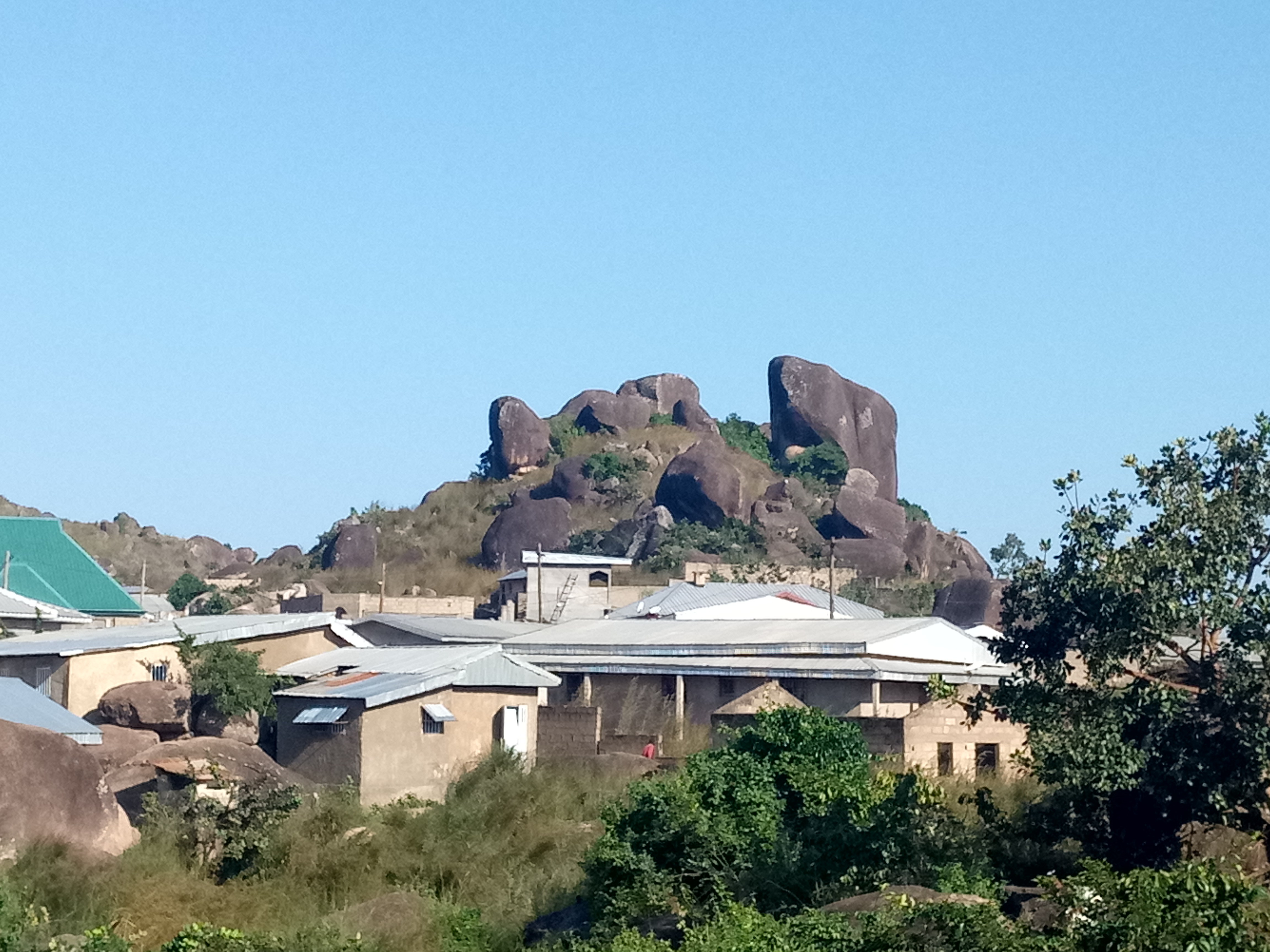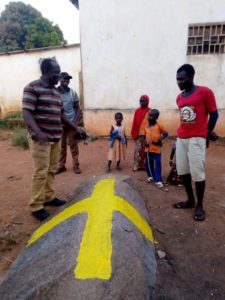Authors : Michel Tchotsoua ; Simon Pierre Petnga Nyamen ; Prosper Innocent Ndjeuto Tchouli ; Arabo Mohamadou ; Issouhou Mouhaman ; Ahmad Barngawi Mohammad ; Gabriel Amougou Amougou et Grace Doherty.
The city of Ngaoundere faces recurring challenges related to the risks of natural disasters, which increase as its rapid and unplanned urban growth continues. Between 2005 and 2015, the city's population increased from 180,763 to nearly 270,000, and its urban footprint nearly doubled from 3,648 ha to just over 6,381 ha.
Its urbanization has taken place, largely spontaneously, resulting in increasing occupation of many flood-prone wetlands each year, from May to September, and mountain slopes at the risk of rock boulders without prior arrangements. . Given its location in the Sudano-Sahelian environment, the city of Ngaoundéré is also exposed to the extreme effects of climate change.
 Houses exposed to geomorphological risks at Socaret @ ACAGER, Tchotsoua, October 2018
Houses exposed to geomorphological risks at Socaret @ ACAGER, Tchotsoua, October 2018
While a Master Plan d'Urbanisme (PDU) and land-use plans were approved in 2016 to guide its future urbanization, the Ngaoundéré City Council lacks basic tools to effectively guide land use. and maintain the various existing basic infrastructures. The Urban Community of Ngaoundéré (CUN), which does not yet have an operational Geographic Information System (GIS) of the city, is limited to the use of physical maps, most of which are obsolete.
Thus, the challenge is to facilitate access to up-to-date georeferenced information, in particular on basic infrastructure (urban equipment, roads, drainage, land use, etc.), in the form of physical and digital maps, to help better decision making by analyzing this data on the one hand, and helping interactive urban planning and management on the other.
In order to meet these challenges, the Urban Community of Ngaoundéré, in partnership with the World Bank, the Global Facility for Disaster Resilience and Recovery (GFDRR), the Ministry of Housing and Urban Development (MINHDU) by the Inclusive and Resilient Cities Development Project (PDVIR), the Geomatics Laboratory of the University of Ngaoundere, civil society organizations and people living in risk areas, have pooled their efforts through the project Open Cities Africa – Ngaoundéré, to systematically collect data on the exposure and vulnerability of the inhabitants of Ngaoundéré to the risk of natural disasters. The aim is to enable the various stakeholders to better anticipate and prioritize investments to prepare the city to cope with floods, falling rocks, soil erosion and / or rockfall.
Organized in three main stages, the collaborative mapping campaign began with the collection of basic data on the city of Ngaoundere. Led by experienced community mappers OpenStreetMap Cameroon, a dozen young mappers consisting of students from the University of Ngaoundéré and trainees from the Urban Community of Ngaoundéré have published more than 20,000 objects (buildings, rivers and streets) under OSM in 2 months.
- Participatory mapping session with residents of the Mardock district. © ACAGER, Moutsina, August 2018.
- Family photo of the Mappers with the trainers of the OpenStreetMap Cameroon Community. © ACAGER, Fotsing, October 2018.
During this first phase, the team alternated between digitization, quality control and the validation of data mapped under OSM. In addition, some data collected as part of its previous activities by the Association for Cartography and Resource Management (ACAGER) and those collected in the field by the mappers using the application QField, just over 3,000 point objects, were all loaded on OSM. In addition, using the Java OpenStreetMap tool (JOSM), the main types of land use in the city of Ngaoundéré were mapped offline and uploaded to OSM.
The second step of the collaborative mapping campaign of the urban space of Ngaoundéré consisted in the characterization of the buildings located in the zones at risk of floods and morphological. This work was done using QField integrated survey forms. Ten tablets Samsung Tab A6 were mobilized for this purpose. This collection was conducted in the field by students who were associated with some inhabitants of risk areas.
The third part of the implementation of the Open Cities Initiative in Ngaoundere consisted in the preparation and realization of the drone coverage of four districts located in the flood zone (Gadamabanga, Djalingo, Sabongari 3 and North CIFAN), and the mountains. Ngaoundéré on which are built neighborhoods Onaref, Socaret, Bamyanga and Béka Hosséré.
- Marking ground control points for the preparation of the drone cover. Professor Tchotsoua explains to people the purpose of this marking so that the cross does not sow doubt in the minds. © ACAGER, Petnga Nyamen, November 2018.
- Launch of the drone to cover areas with natural hazards. SO-GEO has also allowed ACAGER members to learn how to use their equipment. © ACAGER, Petnga Nyamen, November 2018.
In the end, the Open Cities Africa Ngaoundere project will respectively permit :
- to produce new, up-to-date, open-access data on the risks of floods, falling rocks, water erosion and bank collapse,
- to use new tools / products (Atlas) to examine them,
- to build the capacity of local people and,
- to forge new partnerships between the different stakeholders.
For more information on the open cities project in Ngaoundéré (Open Cities Ngaoundéré), follow our progress on https://opencitiesproject.org/ngaoundere.
End note : Open Cities Africa is funded by the Disaster Risk Reduction Financing Program in Africa for ACP-EU cooperation countries founded by the European Union and managed by the Global Facility for Disaster Reduction and Recovery.





